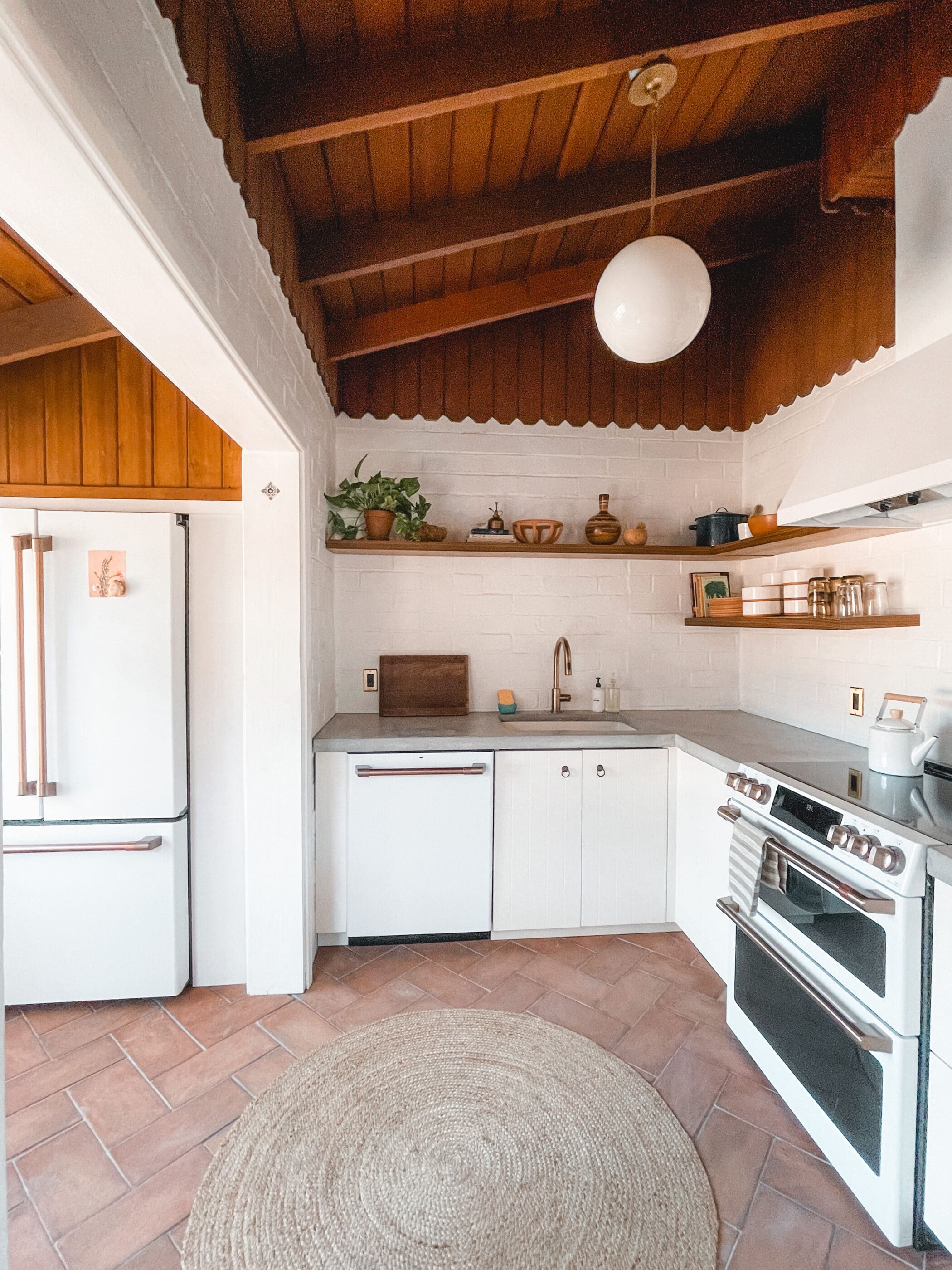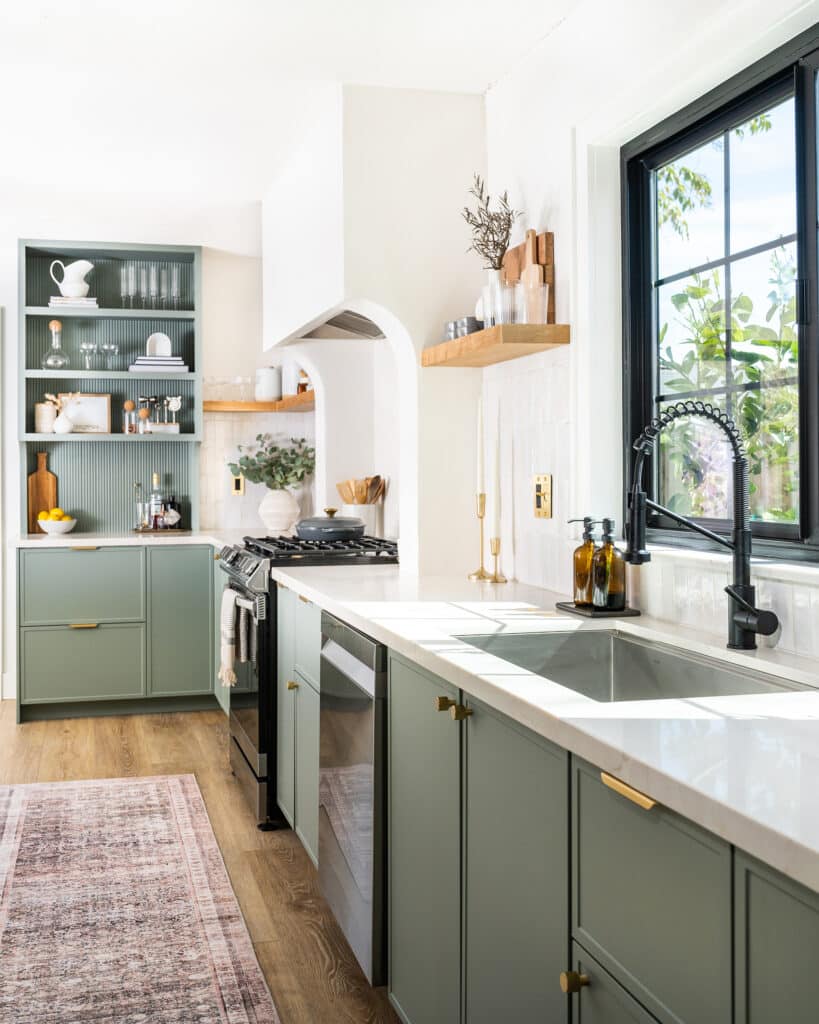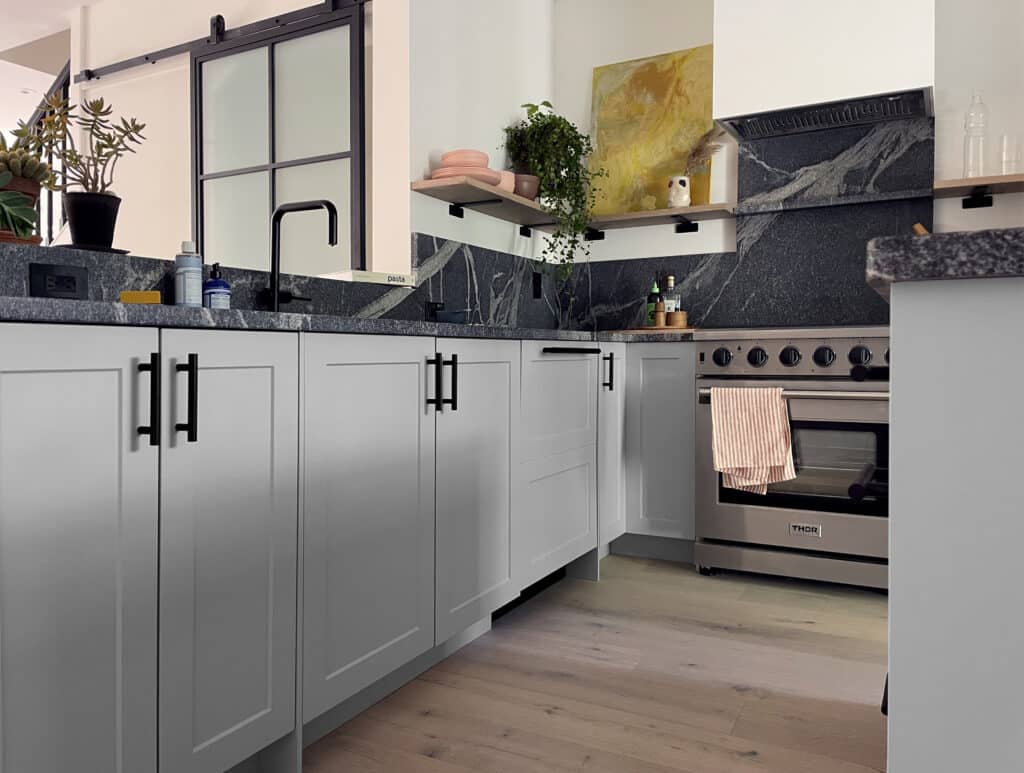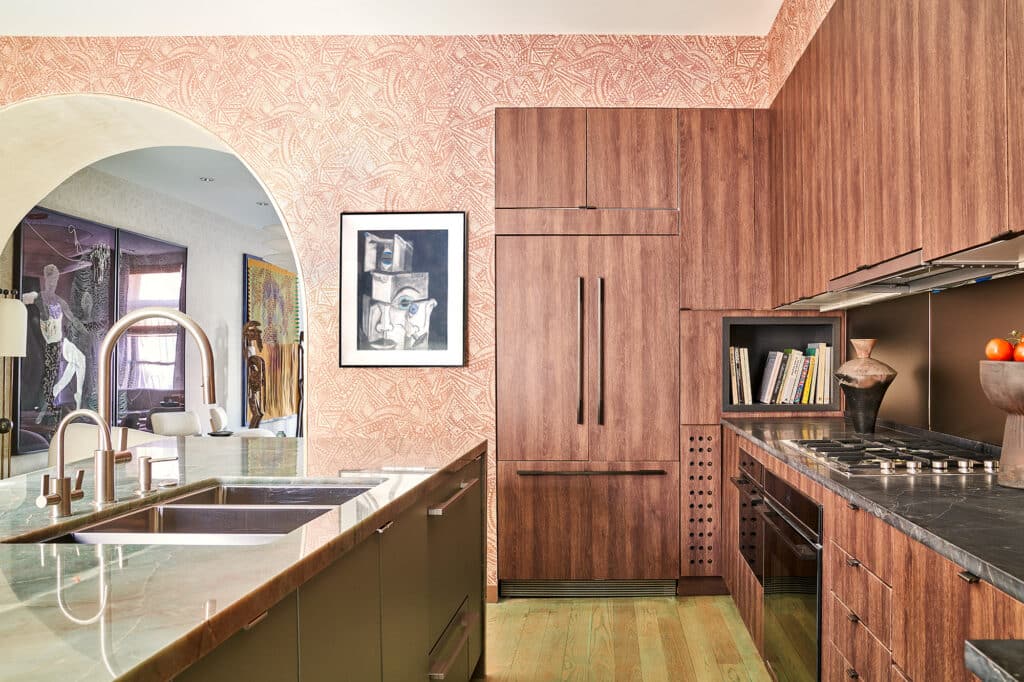Sara and Rich Combs never intended to start a hospitality business. They just fell in love with Joshua Tree National Park during a cross-country road trip in 2014 and immediately started searching for a creative retreat nearby.
A year later, the couple purchased a two-bedroom 1949 hacienda just ten minutes away from the park’s West Entrance and fixed it up themselves. Both Sara and Rich had graduated from art school and worked as graphic designers, so they trusted their instincts and curated a soothing, desert-inspired aesthetic.
Initially, the home was just a getaway from their city life in San Francisco. But as family, friends, and acquaintances began asking to stay, they decided to rent it out. “We found that other people were craving a place like this, too,” she recalls. “Combining design and nature was a passion of ours. Having a place to reset and connect with nature was really important.”
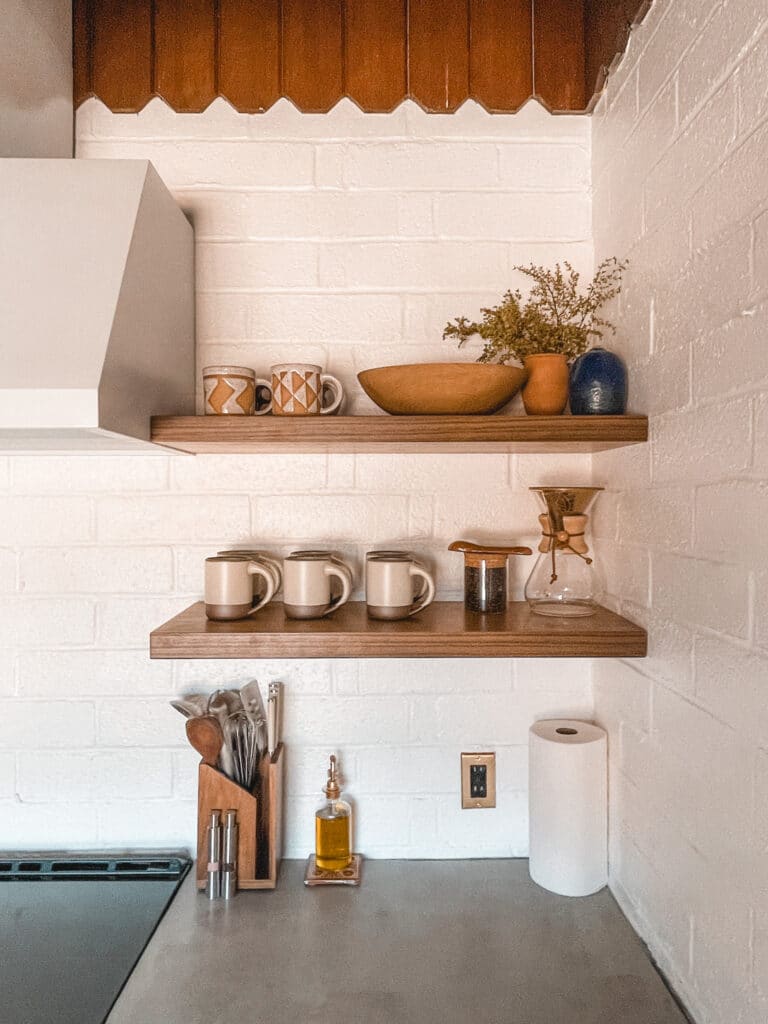
Now, The Joshua Tree House is a full-time rental and the Combs family runs a second property in the area, as well a five-suite posada in Tucson. They’ve also published a coffee table book on desert life and are currently developing a third California oasis and an inn in Marfa. That doesn’t mean they’ve forgotten about their original project, though.
Sara and Rich recently renovated The Joshua Tree House’s small kitchen in an 11-day span between reservations. Thanks to careful planning that started six months ahead, the quick turnaround went off without a hitch and the duo — with the help of Rich’s dad — completely transformed the space. Here’s how they pulled it off.
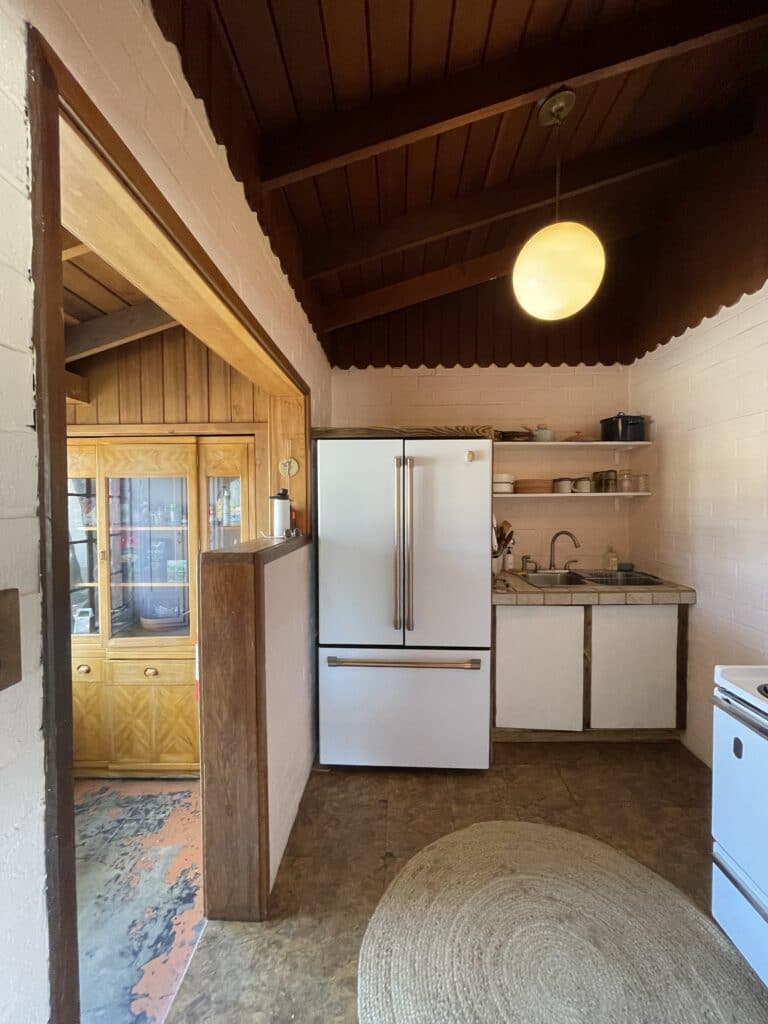
Getting Functional
When the house was first built in the mid-20th century, it didn’t have a kitchen at all. In the decades since, a plywood setup had been cobbled together in a cramped, mudroom-like zone. The couple didn’t have the budget to replace the old vinyl flooring, remove the 1980s hutch, or reorganize the layout when they moved in, so it wasn’t until 2021 that the home got the functional kitchen it deserved.
Sara and Rich raised part of the floor so the room would be one level, knocked down a half wall to let natural light flow in, and moved the refrigerator to make room for additional counter space and storage. They also added a range hood to solve previous ventilation problems. “While we couldn’t make the kitchen bigger, we knew we could utilize the space so much better,” she explains.
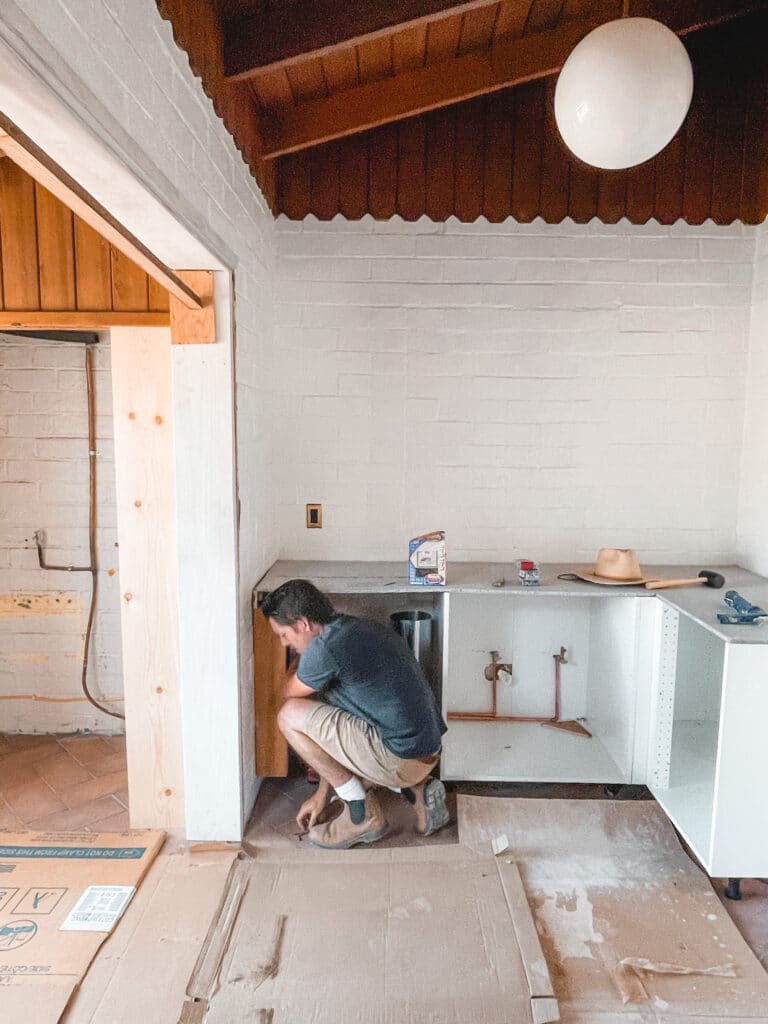
Working Quickly
Most of the couple’s design decisions, from the cabinetry system to the countertop material to the tile shape, were informed by the tight timeline. “In order to get this done in 11 days, we couldn’t rely on other people,” she says. “We had to do it ourselves. We planned it way in advance to make it all happen.”
Sara and Rich knew they were capable of assembling IKEA cabinet bases, which they paired with Semihandmade’s SSS White Beaded fronts that nod to the original wood ceilings, and a concrete counter they poured themselves. Though it was a nerve-wracking endeavor, the DIY surface was a success. “We love it and it’s been holding up really well,” she adds.
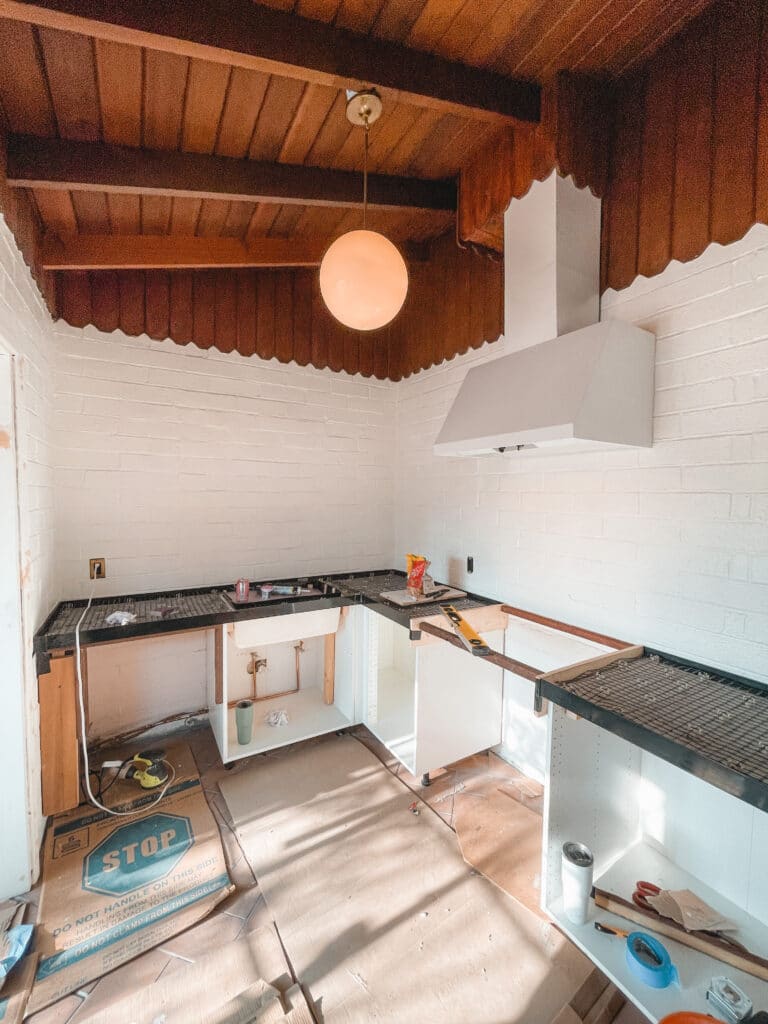
Honoring History
For the floors, the duo opted for Zia Tile’s Cotto line, which is similar to the terracotta and Saltillo in the rest of the house. They chose a hexagon shape, but due to COVID delays, ended up with long rectangles arranged in an equally as fun herringbone pattern. “We wanted to do a playful twist on what would’ve potentially been there originally,” he says
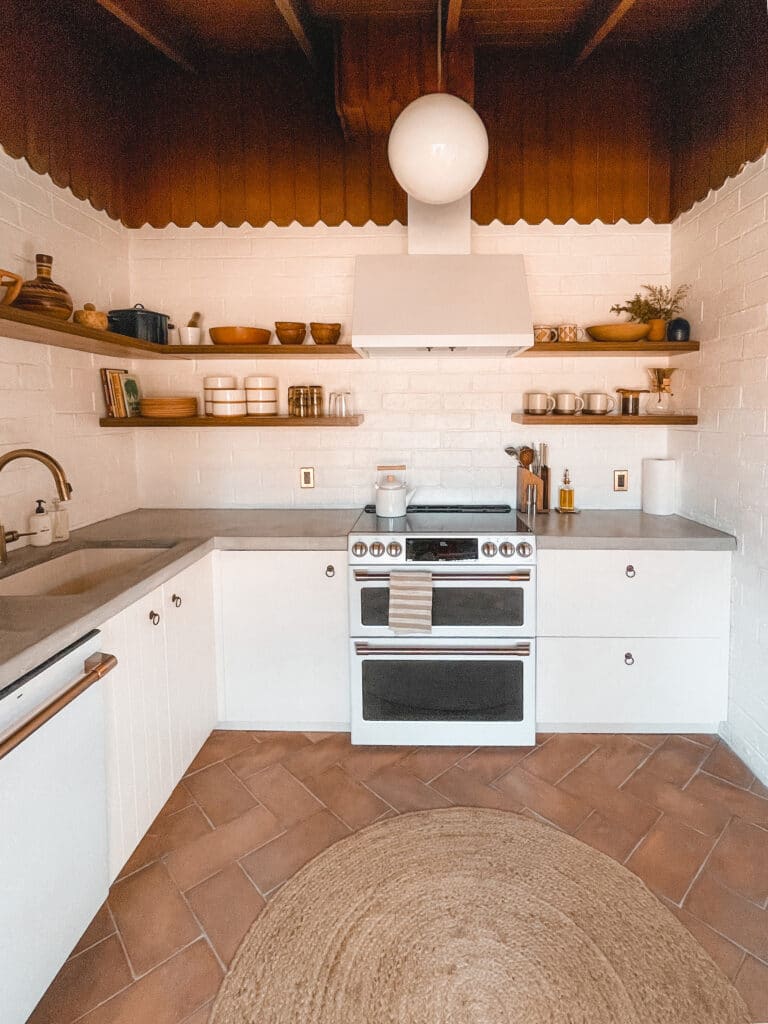
The couple also honored the history of the home by maintaining the cinder block walls, installing Semihandmade teak floating shelves to match the ceiling tone, and adorning the cupboards with antique hardware ring pulls that complement the original iron casement windows. The nostalgic vibe, neutral palette, and natural materials make for a calming desert haven.





